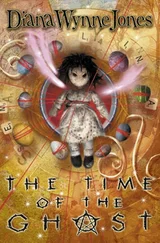Chapter Eight CLOCKS, FOSSILS AND APES
The boundary between apes and humans w;i\ once far from clear. Lord Monboddo, a friend of Dr Johnson's, was convinced that The Orang Utan is as ardent for women;is it is for its own females' and that the Malayans cut the tails off the offspring of such matings and took them as their own. 'From the particulars mentioned' — he wrote - (it appears certain that they are of our species… though they have not come to the lengths of language.' Dr Johnson was not impressed: 'It is a pity to see Lord Monboddo publish such notions… in a fool doing it, we should only laugh; but when a wise man does it, we are sorry. 1
A complementary foolishness is around today. Millions of Americans do not believe that humans are related to apes at all or even that the human species is more than a few thousand years old. Creationists are determined to stay ignorant. They deny that we evolved and are hence connected through our genes to the rest of life. President Reagan himself once said that 'Evolution is only a theory which is not believed in the scientific community to be as infallible as it once was.. Recent discoveries have pointed up great flaws in it.' The creationist dogma bores, when it does not exasperate, biologists. As a result they have been less active in opposition than they should and the bigots have had some success, in the USA at least.
The written documents of history stop at the day before yesterday. The earliest texts come from the Sumerians. Records go back a iittle further in mythic form. Gilgamesh was King of the Sumerian city-state of Uruk in 2700 BC. The Kpic which hears his name has some familiar features. It has a Ci.irdcn of 1'dcii, a Hero's descent to the Underworld (witli.1 safe return) and a Flood. In the same way, the best tH;ill evidence that humans did evolve and that they arc members of the animal kingdom comes from our own ancient records. Without fossils, the portrait of our forebears can never be complete. A historian who knows only the modern world would find it impossible to infer the progress of, say, Turkey and the United States just from what exists today. All historians need documents from the past. To have confidence in their theories evolutionists must have the same thing.
Fossils authenticate the past. At one time, they were defined to be the work of the Devil, placed in the rock to mislead the faithful. Later came a last-ditch attempt to fit them into the Bible. Some fossil mammals seemed to be standing on tiptoe with their noses in the air when they met their end; proof that they had been overwhelmed by Noah's Flood.
Darwin was well aware of the power of the past. About one page in six of The Origin of Species deals with the fossil record of animals and plants. The fragments of their ancestors were central to his theory. For humans, Darwin had an enormous gap in his evidence. He knew little about the remains of our ancestors and there is scarcely a mention of them in his other great work, The Descent of Man, published in 1871. Although we now know a little more about the bones of our predecessors, the record of our own evolution is still very incomplete.
The first fossil to be recognised as a possible human ancestor was Neanderthal man, found in the Neander Valley in Germany in 1856. Such was the power of belief in those days that some dismissed the bones as those of an arthritic cripple or of a cossack who had died in the retreat from Moscow. A hundred years ago, a skull intermediate between humans and other primates was found. This was Pithecanthropus erectus, Java Man. The search for our birthplace was on and has continued ever since.
Palaeontologists still do not agree about where modern humans came from and where they went. The fossil record is so incomplete that a cynic might feel thai the main lesson to be learned is thar evolution usually takes place somewhere else. The origin of humanity has been claimed to be Asia, Africa and even the whole world at the same rime. The human record has been studied as hard as any, but still has enormous holes. Even the best known deposits are sketchy. The area around Lake Turkana in East Africa is almost never off the television screen. Guesses about population size suggest that perhaps seventy million people lived there over its two and a half million year history. Remains of just a few hundred have been found, most as small fragments. The fossil record will never give us the complete history of our past, but it can give dates and places which genes can only hint at. It is worth glancing at the bones before staring at the molecules.
Just as with the genome, the biggest problem with the preserved record of the past is one of scale. Life began about four thousand million years ago. The journey from Land's End to John o'Groat's can again be used as a metaphor. Everywhere south of Birmingham is covered with primeval slime about which we know little. The first primitive land animals crawl ashore near Edinburgh. There are frogs in the Cairngorms and for thirty miles north of Inverness the landscape is infested with dinosaurs. The first primates appear near Wick, while our own species can look over the icy waters of the Pentland Firth from its birthplace a hundred yards from the northernmost shore of Britain. Recorded history begins on the beach, at high tide mark.
The journey through time needs milestones. Fossils can be dated in many ways. Some depend on the decay of radioactive materials as time passes. Others are more ingenious. Ostrich eggs were favoured as containers in the ancient world. The structure of their amino acids, like that ot all tissues, is biased towards the left. Over the years, the amino acids decay into a mixture of left- and right-handed forms. To measure the ratio of left to right dates the shells and the people who used them. The oldest ostrich-shell containers are at Klasies River Mouth, a site in South Africa occupied by humans whose skulls are much like those of today. They are dated at a hundred and twenty thousand years old. The oldest outside Africa, found in the Israeli cave of Qafzeh, are twenty thousand years younger; and fifty thousand years ago the shells were used to make the first of all ornaments, some beads unearthed in Tanzania.
Our history stretches back to the same dawn as all other creatures; and, like them, we are improbable survivors from a past that has almost disappeared. There were several nasty moments on the road to Homo sapiens. For much of history, several species of pre-humans lived at once. Most went nowhere. As apes, we belong to the less successful branch of our family, for most of our kin disappeared fifteen million years ago as monkeys flourished. As primates humans claim allegiance to a group that thirty million years earlier left only a few twigs on a flourishing family tree; and as mammals we are the descendants of a rare and insignificant band of mouse-like creatures that cowered beneath the once thriving dinosaurs.
The history of mankind's earliest ancestors is obscure. Bones that look like those of primates — apes, monkeys and humans — appear around sixty million years ago. The first fragment of what may be an anthropoid (the group which evolved into monkeys, apes and humans) is about forty million years old. This creature was not much bigger than a rat; but within ten million years the group was well established from North Africa to China and Burma. The animals were small, nor much larger than today's tarsiers and, like them, they probably ate insects and fruit rather than the leaves favoured by many of their modern descendants. A jawbone half that age from an early hominoid (the group which includes humans and apes) has been found in Kenya. By fifteen million years ago several species of ape roamed Africa and Asia. None was larger than;i seven year-old boy and all had small brains and pointi*d faces.
Читать дальше
Конец ознакомительного отрывка
Купить книгу












